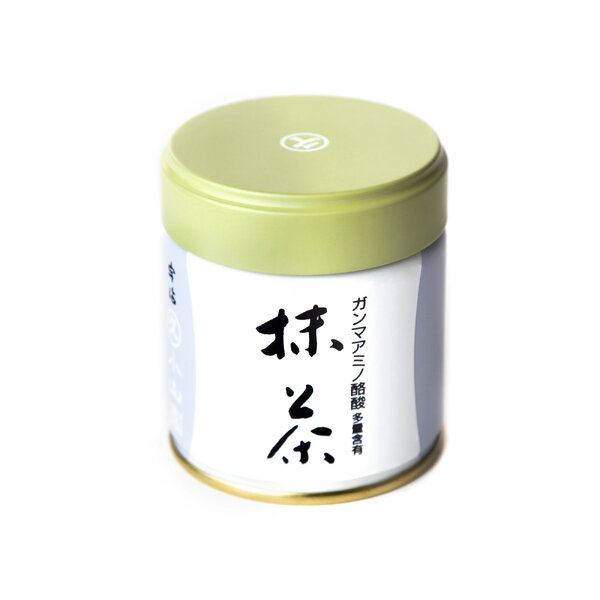Gabaron Matcha - 40g - Tin
-
Harvest Year 2024
-
Country of Origin Japan
-
Type of Tea Matcha
-
Total Price: 38.00 € (including VAT)
Rare Japanese powder Tea Matcha with high percentage of gamma-Aminobutyric acid (GABA) from Marukyu Koyamaen.
Tea Preparation for Single Infusion
-
Tea Quantity 8 g
-
Water Quantity 80 ml
-
Water Temperature 80 °C
-
Brewing Time Whisk the tea with chasen
-
Number of Infusions 1
-
Tea Characteristic Stredne povzbudzujúci
Matcha: A World-Favorite Tea
Matcha is arguably one of the most popular products on the global market. The first thing you'll notice upon opening a package of Matcha is the finely ground green tea, resembling emerald-green powdered cocoa.
Preparation of Matcha Tea
When preparing Matcha, the powdered tea is not steeped in a teapot like traditional teas. Instead, it is whisked into a frothy beverage, which is then consumed in three sips.
Marukyu-Koyamaen
During the Genroku era (1688–1704), a man named Kyujiro Koyama began cultivating and producing tea in Ogura, Uji. His work laid the foundation for what has evolved into Marukyu-Koyamaen. Over subsequent generations, the quality of the tea improved through advancements in every stage, from cultivation to production, leading to the establishment of the renowned Uji tea tradition. The fourth generation expanded the business to include tea trading, and by the eighth generation, it had spread across the country. This tea became highly esteemed. In Japan, Marukyu-Koyamaen is widely recognized for upholding the highest quality standards.
For generations, the teas have been meticulously examined and crafted by experienced directors. Through repeated training and refinement of skills and techniques, the knowledge of how to produce and preserve the finest teas continues to improve. Marukyu-Koyamaen is regarded as one of Japan's premier producers of outstanding teas. Annually, competitions are held to evaluate teas from various producers. Over many years, Marukyu-Koyamaen has consistently won numerous first-place and other prestigious awards. The current director, Motoharu Koyama, has won the National Tea Appraisal Championships twice, achieving a perfect score on his second victory. This accomplishment is highly regarded and marked the first time in the competition's history that such a feat was achieved.
GABA
GABA was first discovered in Japan in 1983 by Dr. Tsushid and his team from the National Agricultural Research Institute. The innovation consisted in a special anaerobic production process that increases the natural content of gamma-aminobutyric acid (GABA) in tea leaves.
GABA (gamma-aminobutyric acid) is a naturally occurring compound in the human body that belongs to the so-called neurotransmitters - substances that transmit signals between nerve cells. It functions as the main inhibitory neurotransmitter in the central nervous system, which means it reduces neuronal activity and contributes to the balance of nerve transmission.
Its role is widely recognized in neuroscience and physiology as part of the body's natural regulatory mechanisms.
GABA is naturally produced in tea through a special processing method in an oxygen-free environment (so-called anaerobic fermentation), which activates natural enzymes in the tea leaves.
In order for a tea to be labeled "GABA tea", it must contain at least 150 mg of GABA per 100 g of dry matter. In practice, values range from 150–450 mg / 100 g. In one experiment a few years ago, we even managed to achieve a value of 600 mg / 100 g.
GABA is a normal part of the human body and, in addition to GABA tea, it is also naturally found in some fermented foods such as kimchi, tempeh or fermented rice.
More information about GABA aminobutyric acid:
https://sk.wikipedia.org/wiki/Kyselina_gama-aminomaslov%C3%A1
https://en.wikipedia.org/wiki/GABA
https://www.sciencedirect.com/science/article/pii/S1756464619305936
https://www.psychologytoday.com/us/blog/sleep-newzzz/201901/3-amazing-benefits-gaba
